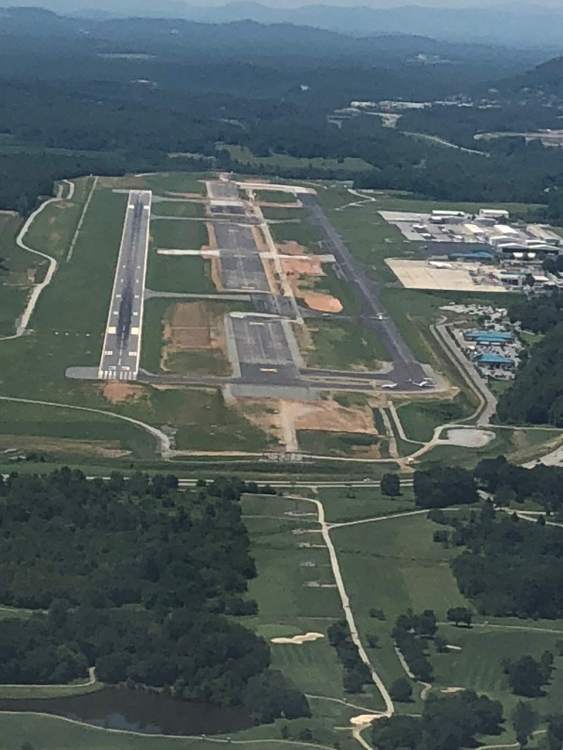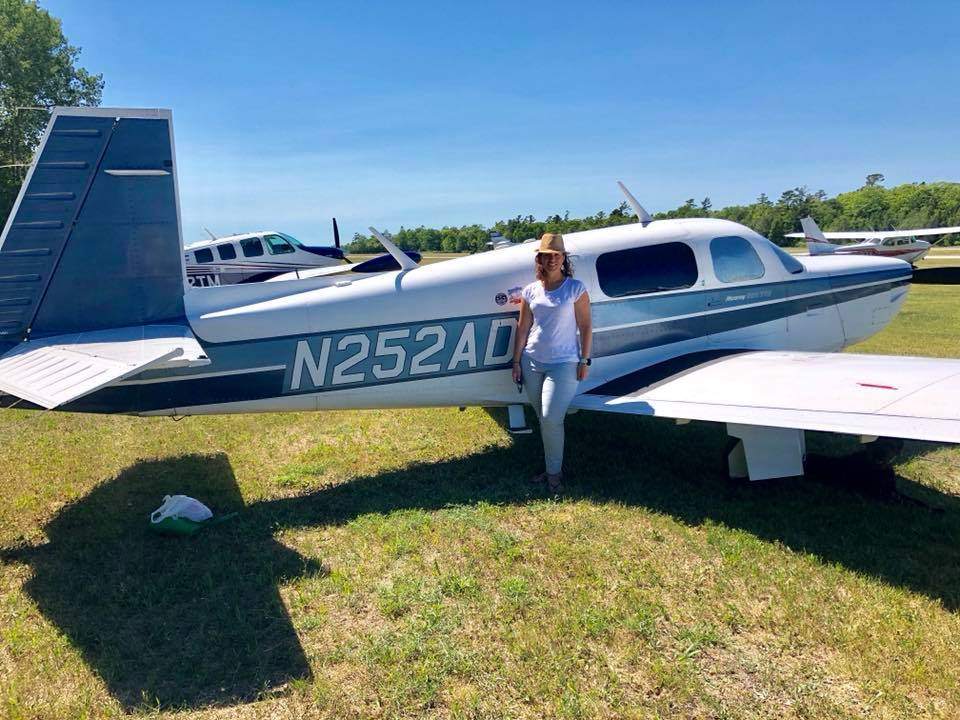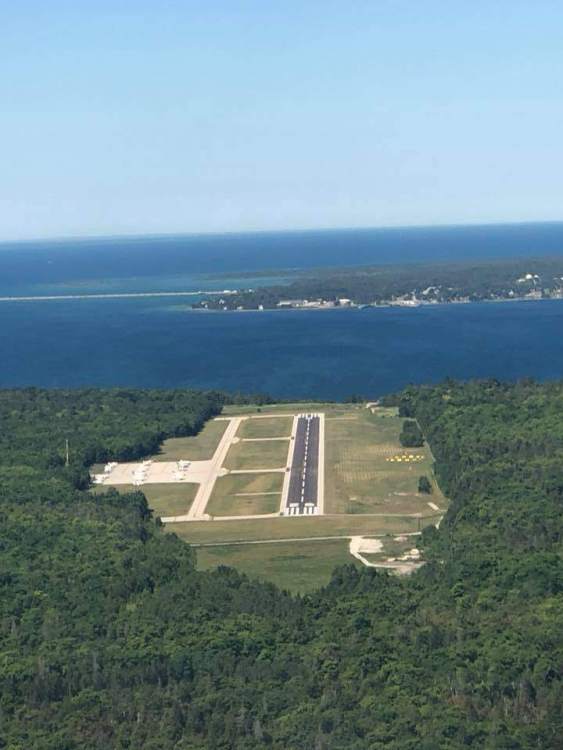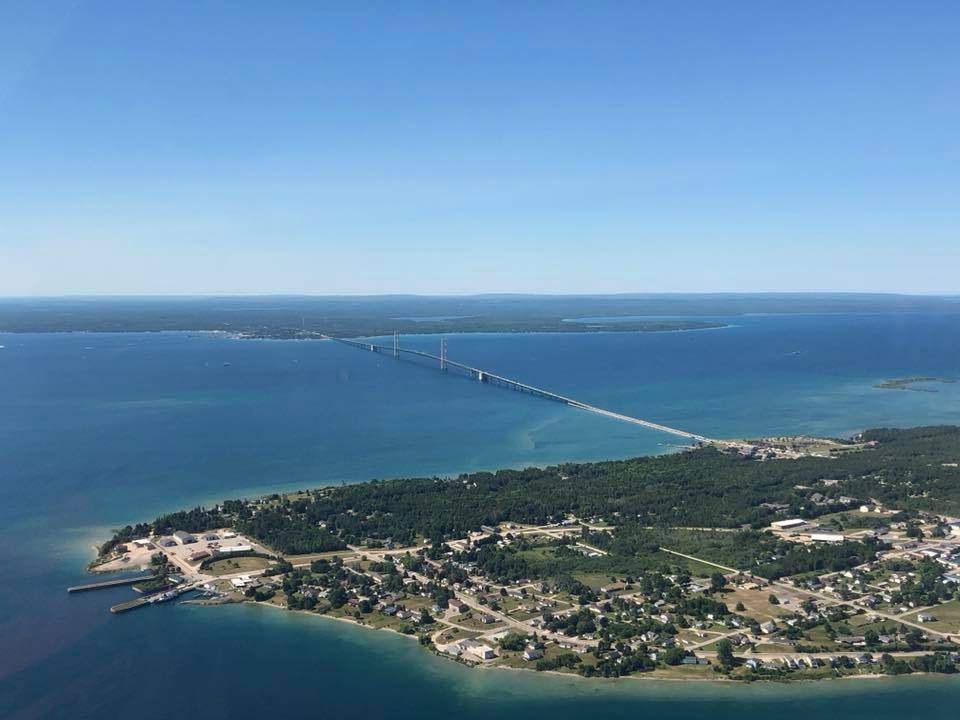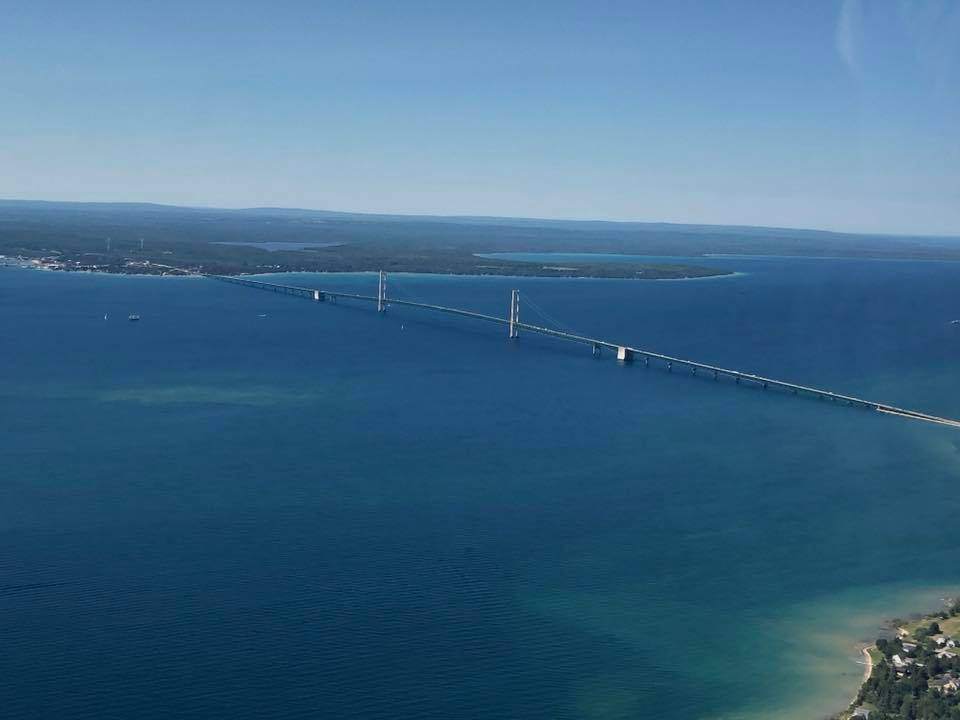
gsxrpilot
Verified Member-
Posts
9,055 -
Joined
-
Last visited
-
Days Won
315
Content Type
Profiles
Forums
Blogs
Gallery
Downloads
Events
Store
Everything posted by gsxrpilot
-
Listen, don't buy any of them! Go to your local HomeDepot, Lowes, Menards, etc. Look for this... https://www.homedepot.com/p/Reflectix-24-in-x-25-ft-Double-Reflective-Insulation-with-Staple-Tab-ST24025/100020855 $25 will get you enough for two or three sets. Cut them out yourself. When I piece doesn't fit, throw it away and cut another piece. Five pieces, one for each window. Cut them just a smidge large (top/bottom) and they'll stay put in the windows without any fasteners, tape, velcro, nothing. I've been using mine for two years now. When not using them, I lay them all together and roll them up. Wrap a strap around them and toss them in the back. The whole thing weights nothing. It keeps the sun, and more importantly, eyes out of the cockpit. Someone will have to pop the lock, break into the plane to see if I've got glass or Narcos. If you're careful to roll them with the window side of the shade inside, they stick better in the windows when unrolled. I've never in two years, had one fall out of the window. I could take pictures of mine, but seriously, it's too simple. One roll of the stuff, a razor knife or scissors and 20 minutes.
-
I'd probably be flying an RV7 if it wasn't for our dog. It's because of the dog that the Mrs. will travel in the plane.
-
Not as long as it's got enough fuel flow. Typically the prop is not most efficient at 2700 rpm. For example, the prop on my plane is most efficient, according to the book, at 2500 rpm. When I had an N/A Mooney, I always ran it WOT. But at 2500 for best pull from the prop and then adjust the mixture accordingly to give best power or best range depending on the requirement of the flight.
-
We've got one of the Aerox masks for our dog. She's only worn it once. My wife was riding in the back seat with her to put it on and get it adjusted. At first she was obviously uncomfortable with it. Then I discovered that the flow was turned all the way up and was likely blowing up her nose. We dialed the flow down to appropriate for 18K and she settled right down. She laid down and wore it fine for a couple of hours until we were in the descent and were able to take it off of her. I'd want her to use it 5 or 6 more times before trusting her to wear it in the back without anyone with her to monitor her movements so she doesn't pull on the hose. I don't think she would though. Some on the board have met Darby and know that she's an extremely obedient dog and wouldn't do anything without permission first. We're lucky to have such a good traveling dog. She's been all over Australia (born in Perth), to over 30 states, and now two provinces in Canada.
-
Yep and that puts me right at Peak. Which is actually a terrible place to run the engine unless on very reduced power. Modern instrumentation, better knowledge about how these engines work, and better training... hopefully lead to better performance over a much longer period of time.
-
fixed it for you.
-
I did talk to a briefer in Canada last week. A couple of them actually. It seems that's the only way to file IFR up there. I haven't spoken to a briefer here in the US since 2009.
-
Yep completely understand. On this July trip we've been at 13K or below. Neither my wife or the dog like wearing the O2. But when I'm solo, I love to be up in the Flight levels.
-
Ok, give me a second while I put the fire suit on... I'm going to respectfully disagree. I'm definitely a "go look and see" type of flight planner. There is so much data available in the cockpit and with ATC today that didn't exist 20 years ago. I like to be prepared in that I have an Instrument rating, O2, and usually full tanks. The combination of the speed and range of my Mooney along with the altitude capability, gives me lots of options if things don't work out. Add to that ADSB Weather, Nexrad Weather, and just looking out the window lets me know what I can do. Finally virtually anywhere you go in this country, ATC has radar on you and has excellent weather radar as well. I've had ATC help thread me between cells numerous times without any problems. I think even just 10 years ago, but certainly 20 years ago, once you launched, you were "on your own" with nothing but your eyeballs out the window to solve weather problems. But today while the weather is the same, the technology is completely different. On this little July trip we're on right now, there is a perfect example. We landed in Dryden Ontario so we could call US Customs (still in the dark ages) and let them know an exact landing time in International Falls. There was a Citation on the ramp also going to International Falls. But it was unloading it's passengers and loading into rental cars. I talked to the pilot. He didn't like the line of wether between Dryden and IF. We took on some extra fuel and took off. Following the rule that if the weather's bad go IFR but if the weather's worse, go VFR. So we launched VFR. Between ATC, and weather in the cockpit, we picked our way around and through the weather and after a 30 minute flight (3 hours of fuel on board) we landed under clear blue skies in International Falls. I realize the Citation pilot didn't have the low altitude options I had in the Mooney. It was a completely safe and uneventful flight. I had good up to the minute intel on the weather, I had plenty of fuel, a fast airplane and so no reason to scrub the flight. And by the way, the kid, Matt Guthmiller, started a company at age 12, earned the money himself and bought a very nice Bo. He's a self made entrepreneur and an MIT student.
-
You fly a M20K 231! That means you file DIRECT. Seriously though, I've done the southern route and the northern route in an M20C. In my M20K and knowing how to use the O2, I'd just go direct. Divert here and there for weather or cheap fuel if required. As @Yooper Rocketman says, "You know its a cross country when you stop for fuel and you're still going." Have fun... we sure are.
-
You won't need to slip any more, you've got speed brakes. Speed brakes can be used any time at any speed and in any configuration. I sometimes pop them out, then put them away, then pop them back out again, all on the same final approach. If you need them or you think they might benefit the upcoming landing, use them. Back on the subject of slips. I slip my K occasionally, but never with the flaps out. I'll use the slip to get down if I need to, then get straightened out and extend the flaps.
-
I'm having a hard time keeping up with the trip report here... we're just having too much fun to stop to post about it. But a quick summary... Day 1 - Austin to Lincoln Day 2 - Lincoln to Winnipeg Day 3 - Winnipeg to Churchill (2 days) Day 5 - Churchill to International Falls, MN (3 days) Day 8 - International Falls to Iron Mountain ( @Yooper Rocketman Turbine Lancair) to Mackinac County. Day 9 - Mackinac Island and back. Day 10 - Mackinac Co. to Asheville, NC. We took off out of 84D with half tanks of fuel. The runway is shortish with trees on the end and slightly rising terrain. And we were fully loaded. That meant a quick stop for cheap fuel just across the Mackinac Straights. Then the rest of the way to Asheville. These Mooneys are such good traveling machines. Arriving KAVL. As the tug was pulling up at Signature, the line manager got down on hands and knees to check my front gear linkage for dents. Obviously he knows about towing Mooneys. And I like that.
-
My Dream Gadget Just released - Garmin G500 TXi
gsxrpilot replied to JohnB's topic in Avionics/Panel Discussion
The prop filter should work as well. Basically they act by darkening the picture just a bit. That forces the camera to compensate by slowing the shutter which restores the light. -
As long as you're at 65% power or below, there isn't any danger area to worry about. If you go slowly a few times to learn the fuel flow when LOP at a given MP, then you'll be able to easily use the "big pull" to get there quickly. With my turbo, I don't run LOP at anything by 65% or below
-
A few pictures from Mackinac Island. Absolutely a gorgeous day. Unfortunately another white and blue M20K 252 landed gear up on the 4th of July. It's sitting on the ramp on it's wheels with curled tips on the prop.
-
At Hicks field there are lots of large size hangars that have homes either upstairs, or in the back. From the outside it just looks like a hangar. But inside will be an entire living quarters with multiple bedrooms, kitchen, living room, bathrooms, etc. My wife hates the idea, but lots of people live there. AeroCountry on the North East side of the city has some beautiful town homes with huge hangars attached. They homes are beautiful three story brick about 2800 sq ft or so built around and over a 60 by 60 hangar. You might also look at Northwest Regional (52F). It's a very active field with lots of flight training, several shops, and avionics shops on the field. The best way to get a share in an airplane is to join the RFC Dallas club based in Addison, Metro Flyers based in Denton or Six for a Six based at Meacham. There are also other clubs around the area. I don't know that any have memberships available right now. But I was a member of the RFC club for a couple of years. If I was still there I probably wouldn't own a Mooney. It was just very cost effective flying. Best of luck.
-
Just pre-lean to where you would normally be cruising ROP. You just don't want to be going from full rich all the way over to LOP. Other wise it's not all that important.
-
My Dream Gadget Just released - Garmin G500 TXi
gsxrpilot replied to JohnB's topic in Avionics/Panel Discussion
Yep, correct. One way to do it with a GoPro is to put a Neutral Density Filter on the camera. They are easy to find on Amazon for a few bucks. It will take the prop out of the picture or solve the black bands on the screens. -
Vegas?? Really? Southwest Airlines or any other budget carrier will get you to Vegas. Use the Mooney to go places it would be very expensive in airfare or time to get to otherwise. Our little summer trip before Oshkosh is... Austin to Lincoln, NE to Winnipeg Manitoba, to Churchill Manitoba to International Falls, MN to Iron Mountain, MI to Mackinac Island, MI (where we are now) to Asheville, NC to Savannah, GA then home to Austin. (NC and GA along with Manitoba Canada in the same trip doesn't make much sense ) But it's a Mooney and it doesn't seem so far. Then an oil change and off to Oshkosh. I can give you some other ideas as well. A tour of the National Parks in California, Oregon, Washington, Montana, Wyoming. (Did that two summers ago). Vermont, New Hampshire, Maine, (last summer). Mooney's are the best way to go places otherwise not so easy to get to.
-
Get a hangar home on the field at Hicks. I have a good friend with an amazing hangar home at AeroCountry but that's the other side of the DFW metroplex. @Greg Ellis listed all the good airports. Spinks is as good as any for a reasonable commute into Fort Worth if you live close to your plane in Burleson or Crowley. @Greg Ellis I used to fly into Spinks all the time when my daughter lived in Burleson. The Karmy's are good friends of mine and I would always park my Mooney in their huge hangar on the south end of the runway. They own the Liquid Stone Cement plant in town.
-
Best of luck with the search for your Mooney. I'm not the one selling the F out in California and don't have any interest in the sale. I only point it out as one that might be a good candidate. Regarding engine time, my experience as well as the research I've done tells me that the most important number on an engine is how much it gets flown. Engines that fly regularly seem to go way past TBO easily. Engines that don't fly seem to need premature overhauls. This is all anecdotal evidence but there's enough of it to get my attention. This engine and airplane are regularly flying and that means a lot to me. My first choice in purchasing any airplane would be an engine that is between 500 and 1000 hours SMOH. My second choice would be one with a run out engine. My last choice would be an airplane with a fresh overhaul. But an engine that is flown regularly is bonus points towards any of these options.
-
The turbine Lancair has been on my bucket list of airplanes since I first heard about it in probably 2008 or 2009. It has got to be the ultimate high performance personal pilot's airplane. But along with some other airplanes on my bucket list, P51, Spitfire, etc. I didn't think I'd ever get to sit in one, much less fly one. So it was an amazing 51st birthday gift to actually get to fly @Yooper Rocketman's absolutely perfect example of the type. The workmanship, the fit and finish, the attention to detail, on this airplane is just unbelievable. Tom has not cut any corners in the building of this bird. And it flies as good as it looks. It starts with the engine startup. You'll want to leave the headsets off just to enjoy the sound of that turbine coming to life. Then during the taxi, the prop going in and out of beta just to keep from running away on the taxi. I think Tom said 150hp at idle power! Then pull on to the runway and let it go! The acceleration is something that must be experienced. I recently test drove a friends Tesla P100D. My wife said the acceleration of the Tesla made her just a little queasy. The acceleration in the Lancair is vary similar. It pins you to the seat and doesn't let up. Tom said not to worry about the steep angle of attack on take off. He has to pitch up hard to keep the airspeed from out racing his ability to get the gear stowed. But it was even more extreme than I anticipated. Eventually we settled into a "cruise climb" that from the Mooney perspective would have been steeper than Vx. We were just going up to play around a bit. In the turbine Lancair... the practice altitude is 15,500. And why not? It seemed like it took a couple of minutes. And of course, this is all with the air conditioning running! Tom got her trimmed out and stressed the need to keep the ball centered. Then it was my turn. I immediately realized Tom was just making it LOOK easy. This plane is a handful. The high wing loading and immense power on the nose keeps your attention. But with some expert coaching from Tom, I eventually was able to get the ball in it's place and keep it there. It's certainly more responsive than our Mooneys. But like driving a Ferrari, there is a sense that it could get away from me at any moment. I was certainly a mile or two behind the airplane. But it's certainly the airplane you want to learn to fly well. Downwind at 150, base at 130 and over the numbers at 105 knots will keep your attention. But again, Tom made it seem easy. And of course, on touchdown, throw that prop into reverse and it slows immediately! What an amazing ride. So one of the benefits of owning and flying a Mooney, is that Iron Mountain or Spruce Creek are not that far from anywhere in the country. Don't pass up the chance to stop by and see this airplane. Chances are, you'll get a ride in it. Would I own and fly one if I could? In a second! It is a true pilot's airplane. @Yooper Rocketman thanks again for an amazing experience!
-
I've had both. I flew an M20C with manual gear and now an M20K 252 with electric gear. I also prefer the manual gear, but it's not a deal breaker. Manual gear is just so simple. You don't have or need any backup gear extension mechanism. You don't need the lights, horn, or other gear "down and locked" indicator. It's almost as if you can reach down and give the gear a tug with your hand and KNOW it's down and locked. It's simple (cheap) to maintain as well. The electric gear is nice for the higher gear extension speed. But you're relying on "third party" indicators to be working correctly to tell you if the gear is up or down. You can't really "test it yourself". You need a light, to tell you. And if the light isn't working, is it a problem with the gear or the light. The motors are expensive to replace/repair if they break. It's just a more complex/expensive system to maintain. Don't be afraid of electric gear. I've never had a problem with mine. It works well. There are three different gear indicators to tell me if the gear is down. And one of them, the window in the floor is pretty fool proof. There's still a light, but if it burns out during a flight, use a flashlight. It's a very robust system and there are more Mooneys flying with electric gear than manual gear. But all things being equal... the one thing from my M20C that I wish I had in the M20K, is the manual gear.
-
Found it.
-
Updating/Fixing Mooney Avionics/Instruments
gsxrpilot replied to sdflysurf's topic in General Mooney Talk
Hopefully you saved enough on the purchase price of this plane to make upgrading the panel now, easy.


